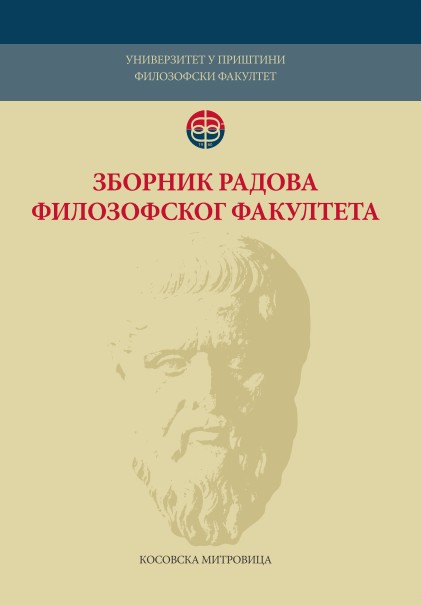Модели лексичке семантике у алгоритмима за обраду природног језика
Мodels of Lexical Semantics in the Algorithms for Natural Language Processing
Author(s): Branislava M. Dilparić, Nina PerovićSubject(s): Language studies, Language and Literature Studies
Published by: Филозофски факултет, Универзитет у Приштини
Keywords: lexical semantics; computational linguistics; decompositional; holistic and relational models; natural language processing; algorithm; word2vec; recurrent neural network
Summary/Abstract: The aim of this study was to determine whether some of the approaches of lexical semantics for studying word meaning could be identified in word2vec and recurrent neural networks (RNN), the algorithms for natural language processing (NLP). Linguistic concepts from the field of lexical semantics were decompositional, holistic, and relational. Although it is assumed that algorithms for natural language processing cannot be written only on the basis of mathematical knowledge, but also linguistic, this analysis was carried out so as to determine the exact models used in the above-mentioned algorithms. First, the aforementioned linguistic models were concisely explained through descriptive research. In describing those, the authors of the paper referred to the studies of the most prominent linguists within the field of lexical semantics such as Fillmore, Firth and Lyons. Then, in a similar fashion, the architecture of NLP algorithms was introduced and described. For this intent, the authors of the paper relied mostly on the studies of Mikolov et al., who designed word2vec. Next, a comparative analysis was conducted between approaches of lexical semantics on one hand and the algorithms in question on the other. This analysis confirmed the underlying assumption of the paper that the characteristics of decompositional and relational approach to studying word meaning could be recognized in word2vec and that the properties of the holistic model could be observed in RNN algorithms. More than that, the analysis showed a considerable overlap in processing natural language, as if the models of lexical semantics were taken and mathematically implemented in the algorithms examined. It should be emphasized that for the purposes of this paper only the basic principles of lexical semantics and NLP algorithms were taken into account. The aim of the paper was not to describe edge cases or to talk in detail about the mechanisms of these structures and their advantages and disadvantages. Essentially, this study sought to examine whether the basic ideas and characteristics of lexical semantics could be found in the architecture of the above-noted algorithms.
Journal: Зборник радова Филозофског факултета у Приштини
- Issue Year: 51/2021
- Issue No: 1
- Page Range: 391-410
- Page Count: 20
- Language: Serbian

